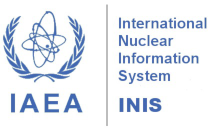New article published in 13(3A) - RADIO 2024
Use of Lymphoscintigraphy Images in Nuclear Medicine to Obtain the Distribution of 99mTc Photons in Computational Exposure Models
Abstract: This study aims to create a source catalog for Lower Limb Lymphoscintigraphy (LLL) examinations in Nuclear Medicine, using real lymphoscintigraphy images from adult male patients. The DIP (Digital Image Processing) software, developed by the Research Group on Computational Dosimetry and Embedded Systems (GPDC&SE), was used to adjust the anteroposterior (AP) and posteroanterior (PA) medical images to the frontal section of the anthropomorphic phantom MASH_sup (Male Adult meSH in supine position). The images were summed line by line, generating a .SGI file, which was processed by the Monte Carlo software to produce the source catalog stored in the file MSUPLC_TC99m.txt. This file contains information for each slice, including the slice number, the area of the source points, and the value of the associated cumulative distribution function (CDF). As a result, a catalog based on real clinical data was successfully generated, which enables the replacement of generic internal sources in the Computational Exposure Models of the GPDC&SE. This makes it possible to simulate LLL examinations more realistically. In the future, this methodology may be extended to female patients, different phantoms, and other scintigraphic procedures. This work represents an advancement in computational dosimetry and personalized nuclear medicine, as it enables simulations that more accurately reflect patient-specific anatomical and physiological characteristics. Read full article.






















